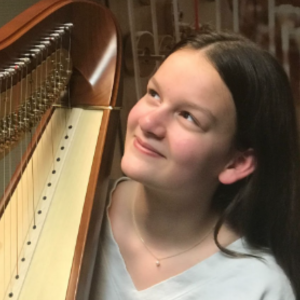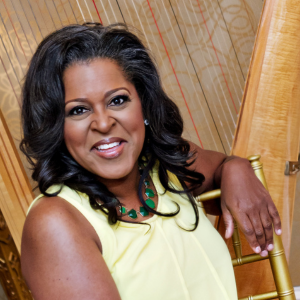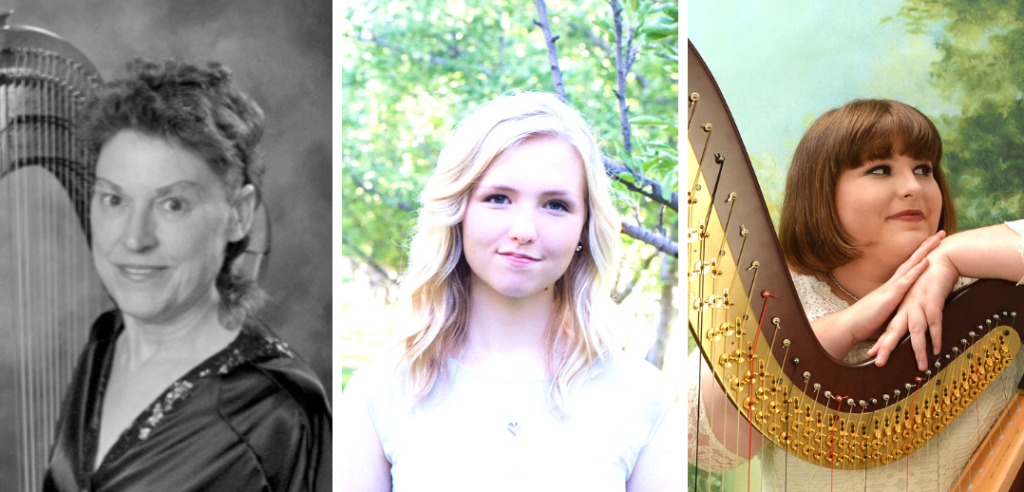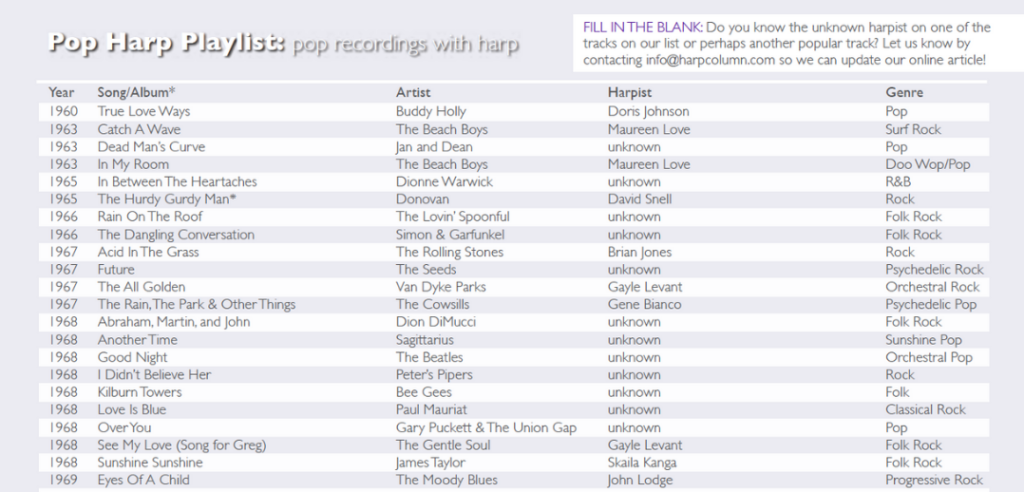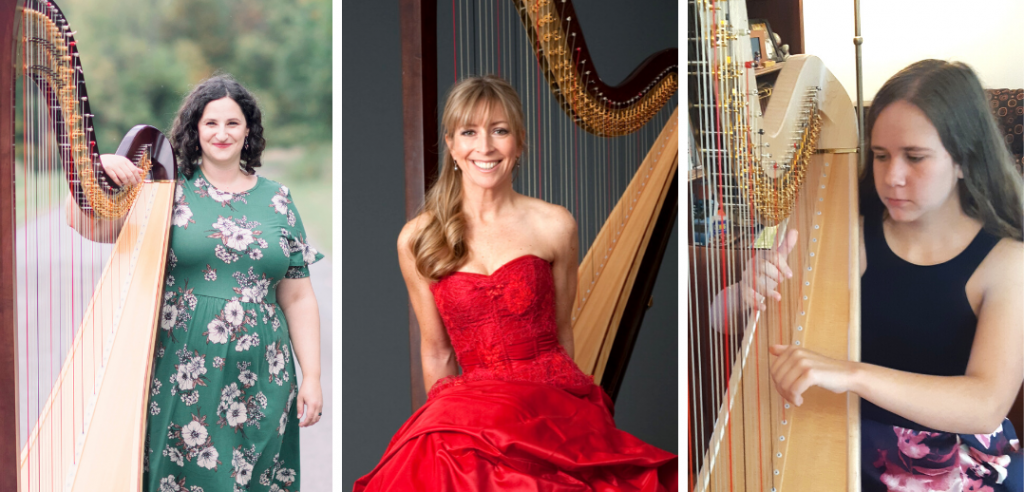This article is part of the feature interview The Mooers the Merrier in this issue.
On the flight out to Seattle to interview Ray and Sue Mooers, I struck up a conversation with the woman sitting next to me. She was a life-long Seattleite, and asked me what was taking me out to her hometown. When I told her I was going to interview the owners of a small harp company called Dusty Strings, she lit up, “Oh, Dusty Strings! That’s where I got my first guitar. I love that place!”
Wait, you know about Dusty Strings? But I thought only harpists, and maybe some dulcimer players knew about Dusty Strings. It felt like that moment when you saw your second grade teacher having lunch at a restaurant with her friends. You mean they have other friends? They have a life outside of me? I would come to find out Dusty Strings is probably better known as a Seattle destination spot for guitarists who live here and are visiting as it is for harpists.
“Yeah, we get that a lot,” says Sue. “There are a bunch of people who know Dusty Strings to be a really, really cool guitar store, and that’s it. Because that’s their world, and that’s what they see.”
“There are really three worlds,” chimes in Ray. “There is the dulcimer world, the harp world, and the retail store and school.”
“And some people know one identity, some people know another and they are surprised when they find out we do something else too.”
The cool vibe of Dusty’s retail store hits you immediately as you walk down the stairs into their basement showroom. It is as if you’ve found some hidden little folk world that is unlike just about anything you’ve ever seen. Countless guitars, mandolins, ukuleles, banjos, mountain dulcimers, hammered dulcimers, and harps, oh yeah, harps, fill the space and line every wall, floor to ceiling. You couldn’t build a store like this if you tried. All of the acoustic instruments, along with the store’s exposed wood beams, wood shelves, wood stage, and three decades of history give the space a warm and inviting feel. You can’t help but want to pick up an instrument and try it out. And the staff, well, they are so helpful and knowledgeable, before I know it, I’ve got a ukulele in my hands and they’ve even taught me to play a few chords.
School is nearly out for the day and traffic is starting to pick up as students start coming in for lessons at the Dusty Strings School, which shares space with the store. In the back, an instrument repairman is trying to diagnose the source of a mysterious buzz on one of the hundreds of instruments that comes to the shop for tuneups repairs each year. Back in the showroom, customers are browsing, trying out different models, mulling over a buying decision. Surveying the scene, you can’t help noticing, everyone’s got a smile on their face—employees and customers alike. Not the kind of fake smile plastered on in an attempt to look good, but the genuine type that you don’t even realize is there.
* * *
It was pouring rain when I pulled up to Dusty Strings’ workshop on the other side of the city. The weather is probably not noteworthy, given that it is Seattle. The workshop is housed in a new, modern-looking building in the middle of a somewhat industrial part of the city (from what I could see through the sheets of rain) called Interbay.
It seems kind of incongruous from the outside—beautiful handmade instruments being produced in this location—but then again, where would you expect to find a harpmaker? The harp builders’ district?
Ray and Sue broke ground on this building in 2001, designing the space to suit their instrument-building needs. The wide open showroom greets guests with Dusty’s entire lineup of harps and hammered dulcimers, as well as some “historical” pieces, including the first dulcimer and first harp. As prominently displayed as the instruments themselves, are the instrument makers—photos of Dusty String employees cover the walls, telling of each person’s contributions to the company.
“I think one of the things that the employees here are intensely proud of is that they’re creating something worthwhile, something that’s beautiful, something that’s lasting,” notes Ray. “They can put everything that they can into it and be proud of that in the end. They’re not making cabinets. They’re not making widgets. They’re not making future landfill. These are heirloom musical instruments.”
That is made clear as we tour the workshop. People say that you never want to see meat or laws being made because it will totally turn you off to them. The polar opposite can be said of seeing the harp making process. Every harpist knows that the instrument we play is a feat of engineering and art, but seeing the care and craftsmanship that go into these instruments takes that generally accepted fact and makes it real.
As we wind our way through the workshop, everyone we see tells us what part of the harp they are working on. Parts being cut out on a CNC machine, strings being wound on a custom-rigged equipment, harp parts being carefully put together. It seems everyone who works here has been here for a while, and nearly everyone steals Ray’s ear for a minute as we look around, talking about some process or change or status update.
“We’re not heavy-handed managers here,” says Ray.
“If anything we’re too much the opposite,” adds Sue.
“We didn’t have a production manager until two years ago, we just had teams and we all worked together.”
Most Dusty employees wear many hats and move around the production cycle so that they are not doing the same job day in and day out.
“Many of our staff aren’t musicians,” says Ray, “but they’re allowed to involve themselves in the music business through the crafting of the instruments, and that’s a big part of their lives. They are very, very proud to work here as a result.” •









